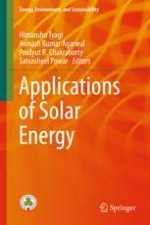2018 | OriginalPaper | Chapter
Visual Comfort Based Algorithmic Control for Roller Shade and Assessment of Potential Energy Savings
Authors : Lakshya Sharma, Dibakar Rakshit
Published in: Applications of Solar Energy
Publisher: Springer Singapore
Activate our intelligent search to find suitable subject content or patents.
Select sections of text to find matching patents with Artificial Intelligence. powered by
Select sections of text to find additional relevant content using AI-assisted search. powered by
